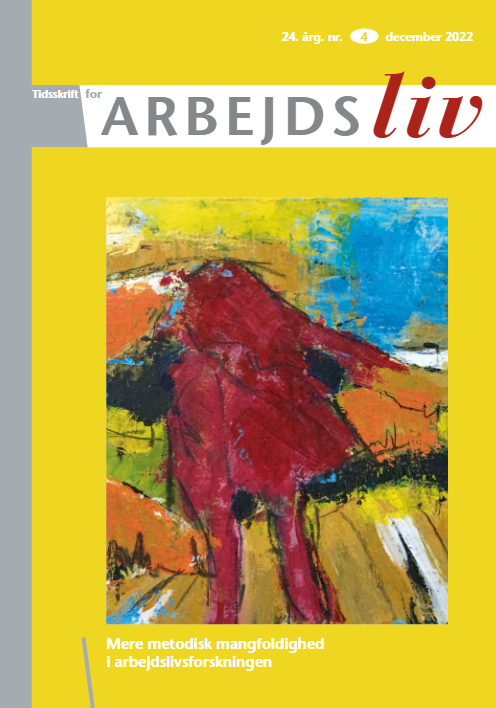Numbers and patterns in qualitative working life studies
DOI:
https://doi.org/10.7146/tfa.v24i4.135160Keywords:
Kvalitativ-kvantitativ, Spørgeskema, kodning, åbne spørgsmål, mætningAbstract
In this article we investigate potentials and problems related to online surveys with open distribution and open-ended questions in working-life studies. We are interested in the potentials and problems occurring when researchers obtain large amounts of answers written in the respondents’ own words. How are they properly analyzed and condensated? How do we in a methodologically credible way explore the potentials of gaining new insights in people’s working lives, based on large amounts of qualitative data? We argue that counting and looking for patterns can make sense and give access to insights in people’s working life otherwise unobtainable – but only when done with caution and when certain criteria are met in the research design and coding process. These criteria are stringent coding, clear and equivalent units of data. In such cases, coding beyond the “point of saturation” combined with background variables can give new insights in the working lives of the respondents. An online survey with 1684 respondents on job-satisfaction in the educational sector in Denmark constitutes the case for a discussion about when and how to count in qualitative research.
Downloads
Published
How to Cite
Issue
Section
License
Copyright (c) 2022 Forfatteren og tidsskriftet i samarbejde

This work is licensed under a Creative Commons Attribution-NonCommercial 4.0 International License.
Forfattere, der publicerer deres værker via dette tidsskrift, accepterer følgende vilkår:
- Forfattere bevarer deres ophavsret og giver tidsskriftet ret til første publicering, samtidigt med at værket ét år efter publiceringen er omfattet af en Creative Commons Attribution-licens, der giver andre ret til at dele værket med en anerkendelse af værkets forfatter og første publicering i nærværende tidsskrift.
- Forfattere kan indgå flere separate kontraktlige aftaler om ikke-eksklusiv distribution af tidsskriftets publicerede version af værket (f.eks. sende det til et institutionslager eller udgive det i en bog), med en anerkendelse af værkets første publicering i nærværende tidsskrift.
- Forfattere har ret til og opfordres til at publicere deres værker online (f.eks. i institutionslagre eller på deres websted) forud for og under manuskriptprocessen, da dette kan føre til produktive udvekslinger, samt tidligere og større citater fra publicerede værker (se The Effect of Open Access).





